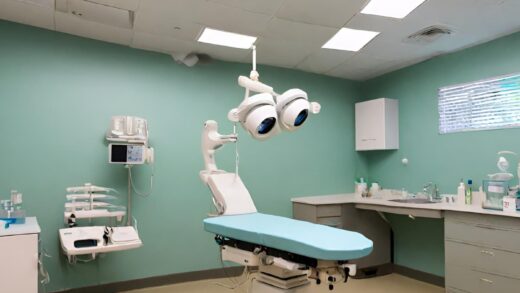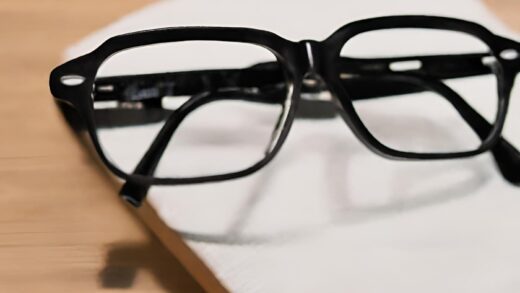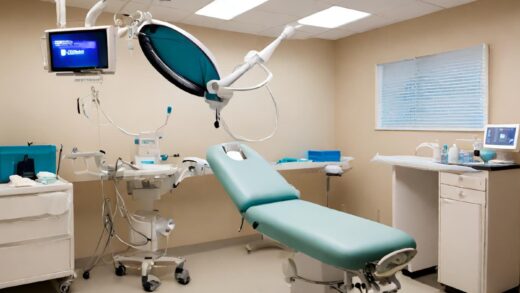Vision correction has come a long way since the invention of eyeglasses in the 13th century. Today, technological advancements have transformed the field of ophthalmology, providing individuals with more precise and effective options for improving their vision. In this comprehensive guide, we’ll explore the pivotal role of cutting-edge technology in vision correction, with a particular focus on the revolutionary SMILE eye surgery procedure.
Evolution of Vision Correction Techsmile eye surgerynology
Historical Overview
The journey of vision correction begins with a glance back in time. Before the advent of modern surgical procedures, individuals relied on eyeglasses to address refractive errors. While glasses were a significant improvement, they had their limitations, including the inconvenience of wearing them and the potential for discomfort.
The Emergence of Laser-Based Techniques
The turning point in vision correction occurred with the introduction of laser technology. Laser-Assisted In Situ Keratomileusis, or LASIK, revolutionized the field. It allowed for precise reshaping of the cornea, addressing nearsightedness, farsightedness, and astigmatism with remarkable accuracy. LASIK marked a significant shift from relying solely on external optical devices to reshape the eye’s internal structures.
Understanding the Technology Behind All Laser LASIK
Explaining the LASIK Procedure
At the heart of LASIK is the reshaping of the cornea, the eye’s transparent front surface responsible for focusing light onto the retina. To achieve this, a surgical procedure is performed. During LASIK:
Anesthetic Eye Drops: The process begins with the application of anesthetic eye drops, ensuring the patient’s comfort throughout the procedure.
Creating a Corneal Flap: A specialized laser, known as a femtosecond laser, is used to create a thin flap on the surface of the cornea. This flap is gently lifted, allowing access to the underlying corneal tissue.
Reshaping the Cornea: The excimer laser, another crucial component of LASIK, is used to reshape the cornea. It precisely removes microscopic amounts of corneal tissue to achieve the desired curvature.
Repositioning the Flap: After corneal reshaping, the corneal flap is meticulously repositioned. Remarkably, no sutures are needed; the flap naturally adheres back into place.
The Role of Lasers
Lasers play a central role in laser LASIK, providing unmatched precision in reshaping the cornea. The excimer laser’s ability to remove tissue with submicron accuracy ensures that vision correction is achieved with minimal disruption to the surrounding corneal tissue. This precision is what sets laser LASIK apart from traditional LASIK procedures.
Advantages of Laser Precision
The precision of lasers in vision correction offers several advantages:
Customization: Laser technology allows for highly customized procedures, tailoring the treatment to the unique needs of each patient.
Enhanced Safety: The accuracy of lasers reduces the risk of complications, resulting in a safer surgical experience.
Predictable Outcomes: Laser precision ensures more predictable and reliable visual outcomes, leading to high patient satisfaction.
Comparing All Laser LASIK with Traditional LASIK
Traditional LASIK Techniques: Traditional LASIK, while effective, involves the use of a microkeratome, a mechanical blade, to create the corneal flap. While this method has been successful for many patients, it may not provide the same level of precision as all laser LASIK.
Advantages of All Laser LASIK: All laser LASIK as the name suggests, relies entirely on lasers throughout the procedure. This eliminates the need for a microkeratome blade, reducing the risk of certain complications. The femtosecond laser creates the corneal flap with remarkable precision, enhancing the safety and accuracy of the surgery.
The use of lasers in both creating the flap and reshaping the cornea contributes to more predictable and consistent results. Patients who undergo LAL surgery often experience faster recovery times and a reduced likelihood of post-operative discomfort.
Advanced Technologies in Vision Correction
In addition to the central role of lasers, several other cutting-edge technologies have contributed to the advancement of vision correction:
Wavefront Technology: Wavefront technology is an advanced diagnostic tool that creates a detailed map of the eye’s optical system. This map is used to customize LASIK procedures further, addressing even subtle vision imperfections. Wavefront-guided LASIK allows for highly individualized treatments, resulting in improved visual quality.
Femtosecond Lasers: Femtosecond lasers, as mentioned earlier, are instrumental in creating precise corneal flaps. Their ability to cut tissue at the femtosecond (one quadrillionth of a second) level is a testament to their remarkable accuracy. The use of femtosecond lasers minimizes the risk of complications associated with mechanical microkeratomes.
Innovations in Diagnostic Equipment
Modern diagnostic equipment offers ophthalmologists a deeper understanding of a patient’s eye health. Tools like optical coherence tomography (OCT) provide detailed, cross-sectional images of the eye’s internal structures, allowing for better pre-operative planning and post-operative assessment.
Safety and Accuracy in Vision Correction: As technology continues to advance, it brings with it improvements in the safety and accuracy of vision correction procedures. This is particularly evident in LASIK, where the combination of wavefront-guided treatment, femtosecond lasers, and sophisticated diagnostic tools contributes to a highly controlled and precise surgical experience.
Reducing Risks: The use of lasers in vision correction reduces the risk of complications such as infection or incomplete flap creation. The absence of mechanical blades minimizes the chances of human error during the procedure, enhancing patient safety.
Minimizing Side Effects: The precision of laser technology results in smoother corneal surfaces, reducing the likelihood of post-operative side effects such as halos, glare, or difficulties with night vision. Patients can expect a more comfortable recovery period with fewer visual disturbances.
The Future of Vision Correction
As we look to the future, it’s clear that technology will continue to play a central role in the evolution of vision correction. Emerging technologies, such as artificial intelligence-driven diagnostics and further enhancements in laser precision, hold the promise of even more refined and individualized treatments.
Moreover, researchers are exploring the potential of regenerative therapies and gene editing techniques to address vision issues at the genetic level. These developments may lead to treatments that not only correct vision but also prevent vision-related conditions altogether.
Conclusion
The role of cutting-edge technology in vision correction cannot be overstated. From the historical evolution of eyeglasses to the emergence of LASIK and the precision of all laser LASIK, technology has continually transformed the field, offering individuals clearer, more comfortable vision.
LASIK represents the pinnacle of technological advancement in vision correction, providing patients with a safer, more precise, and more predictable surgical experience. The use of lasers in every step of the procedure, from creating the corneal flap to reshaping the cornea, sets all laser LASIK apart as a top choice for individuals seeking to improve their vision.
As technology continues to advance, the future of vision correction holds exciting possibilities. With a focus on enhancing patient safety, reducing side effects, and achieving consistently excellent outcomes, the partnership between technology and ophthalmology promises to bring even brighter days for those seeking clear and comfortable vision.
If you’re considering vision correction, it’s important to consult with a qualified ophthalmologist who can assess your unique needs and recommend the most suitable treatment option. With the guidance of experts and the power of cutting-edge technology, the journey to better vision has never been more promising.


